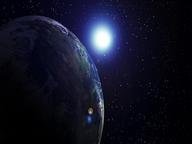Quiz Answer Key and Fun Facts
1. Over the centuries that humans have viewed the night sky with telescopes, apparent movement of stars relative to other stars has been seen. The term stellar ___ is given to this apparent movement of nearby stars with respect to stars further away due to a shift in the location of the observer. What word should fill the blank?
2. The luminosity of the sun can be quantified and an expression can be derived to explain this critically important physical phenomenon. The luminosity of the sun is the amount of energy radiated by the sun in a given period of time. Thus the luminosity of the sun is important to life on Earth as nearly all living systems require energy which originally comes from the sun. Which of the following instruments can be used to detect luminosity?
3. A lot of the maths behind astronomy tends to be in the form of ratios. One example is determining the ratio of the luminosity of a specific star when compared to the luminosity of our sun. Out of the following options which contains BOTH the factors necessary to work out such a ratio of luminosity?
4. The luminosity of a star can in some instances be related to its mass. This is generally only the case during a certain period in the life of a star. At what point in the evolution of a star is the star's luminosity approximately the mass of the star raised to the power 3.9?
5. The luminosity of a star can be determined by playing around with the magnitude of the star. However, one can run into a little bit of trouble as to what the magnitude of a star actually is. When you look into the night sky and observe a star are you registering its apparent magnitude or its absolute magnitude? *See hint*
6. Astrophysics is well known as being the science that hasn't fully embraced the SI system of scientific units. This could possibly be justified because everything that can be quantified is done so on such a massive scale that isn't seen in any other science! An example is the light year, but is this a unit of time or distance? *See hint*
7. Thanks to two scientists of the night sky there exists a diagram which shows the period in stellar evolution that a star should be at due to their luminosity and temperature. What is the name of this diagram?
8. Perhaps more famous due to the telescope named after him, this individual made great steps forward in determining what was happening to the size of our Universe. Is our Universe expanding, is it contracting or is it staying exactly the same? Well such questions can be answered in part due to this scientist's work. Who is this scientist who came up with the law stating that the quotient, (recessional velocity of a galaxy away from Earth) / (distance from Earth to galaxy), is amazingly a constant?
9. Despite the concept of "dark matter" being a relatively new one, it could be suggested that the beginning of the road which ends at this mystical hypothesis started with Johannes Kepler. It was he who, through trial and improvement, came up with the equation 'p^2 = a^3' which was later modified by Isaac Newton. By taking Newton's modification of Kepler's Third Law to its logical conclusion, what should happen to the rotational (orbital) velocities of stars about the galactic centre as you increase the distance from the star to the galactic centre?
10. Part of the fascination of the cosmos is in the sense of the unknown. Is there alien life in the far reaches of the Universe? Is the Universe in a constant cycle of Big Bangs and Big Crunches? Besides such questions that interest the public there are astronomical bodies that never fail to fascinate. Which of the following bodies has a singularity and a Schwarzschild radius that corresponds to its event horizon?
Source: Author
jonnowales
This quiz was reviewed by FunTrivia editor
crisw before going online.
Any errors found in FunTrivia content are routinely corrected through our feedback system.

